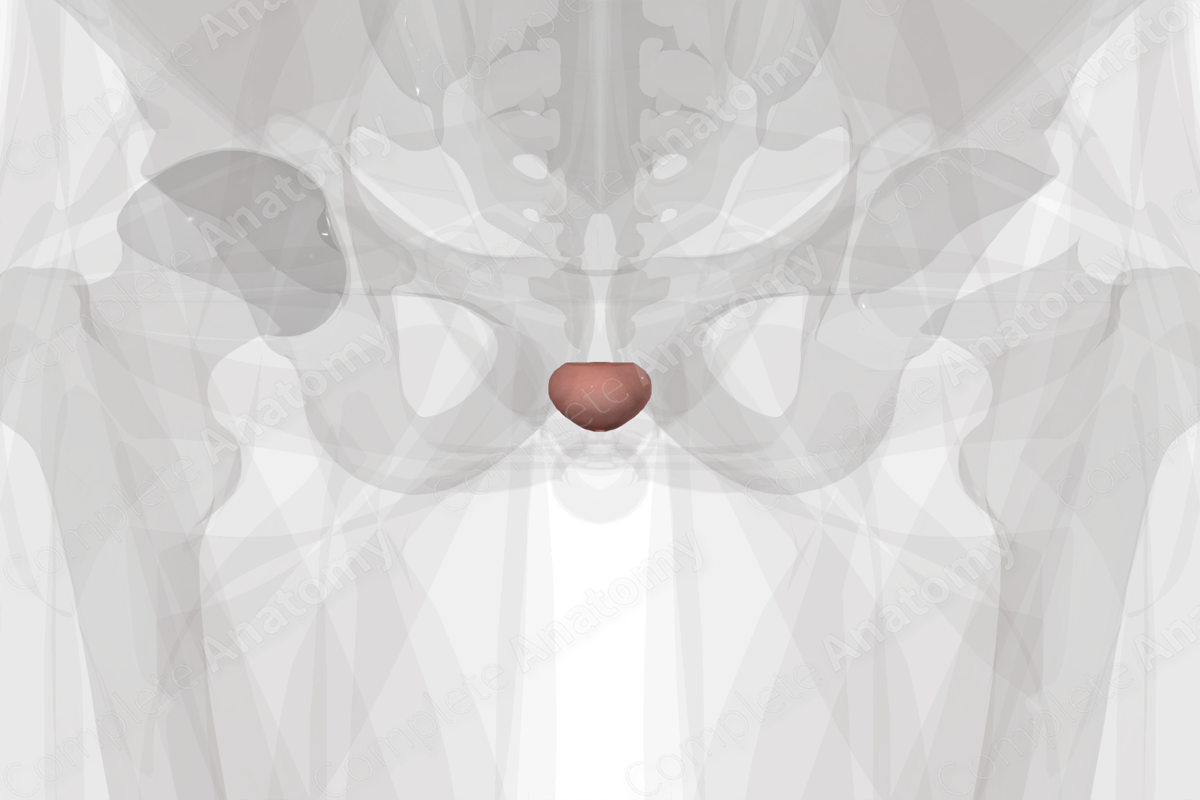
Prostate Quick Facts
Location: Directly inferior to the bladder.
Arterial Supply: Inferior vesical, internal pudendal, and middle rectal arteries.
Venous Drainage: Prostatic venous plexus.
Innervation: Somatic: Visceral afferent: Pudendal Nerve; Autonomic: Inferior hypogastric and prostatic plexuses.
Lymphatic Drainage: External and internal iliac lymph nodes.
Prostate Structure/Morphology
The prostate is a walnut-sized, globular fibromuscular gland. It is fixed superiorly to the base of the urinary bladder and sits superior to the pelvic floor. The prostate can be divided into four different zones:
—the central zone surrounding the ejaculatory ducts;
—the transitional zone surrounding the proximal urethra;
—the peripheral zone surrounding the distal urethra;
—the stromal zone (also known as the anterior fibromuscular zone) that is comprised of muscles and connective tissue.
The superior aspect of the prostate is termed the base and the inferior aspect is termed the apex. There are two posterolateral surfaces, and an anterior and posterior surface of the prostate.
The prostatic urethra passes directly through the substance of the prostate on its way to the penis.
Prostate Anatomical Relations
The superior aspect of the prostate is termed the base and is continuous with the neck of the bladder. The inferior aspect is termed the apex and marks the junction of the membranous and prostatic urethra. The anterior surface of the prostate lies directly posterior to the pubic arch. It is connected to the pubic bone by the puboprostatic ligament. The inferolateral surfaces of the prostate are related to the anterior muscle fibers of levator ani. They surround the prostate in a sling termed the pubourethral sling or pubourethalis. The posterior surface of the bladder lies anterior to the rectum and the rectourethralis muscle. The superior surface of the prostate is penetrated by two ejaculatory ducts.
The prostate is surrounded by an anatomically variable prostatic capsule which is formed from the surrounding fascia. The prostatic plexus of veins and nerves reside within the capsule.
Prostate Function
The prostate provides passage for urine and sperm to pass out of the body. During ejaculation the prostate secretes a slightly alkaline fluid into the prostatic urethra. Fluid from the prostate, together with seminal fluid from the seminal gland, and sperm from the ductus deferens combine to form semen.
Prostate Arterial Supply
The prostate receives blood from various sources. Prostatic branches from the inferior vesical artery communicate across the midline of the prostate. The inferior gluteal, internal pudendal, and middle anorectal arteries supply branches to the prostate.
Prostate Venous Drainage
The prostatic venous plexus surrounds the anterolateral aspect of the prostate. It receives tributaries from the deep dorsal vein of the penis and the vesical venous plexus to drain into the internal iliac veins.
Prostate Innervation
The prostate receives both autonomic and somatic visceral innervation. The inferior hypogastric plexus supplies the prostate. The nerves traveling to the prostate form a peri-prostatic nerve plexus within the prostatic capsule. The prostatic plexus supplies the smooth muscle of the prostate and prostatic urethra. The skeletal muscle is supplied by the pudendal nerve. This skeletal muscle contracts and dilates the prostatic urethra.
Prostate Lymphatic Drainage
The lymph of the prostate is drained by the medial group of external iliac nodes, in which the efferent nodes pass to the internal iliac nodes.
Prostate List of Clinical Correlates
- Prostate cancer
- Benign prostatic hyperplasia
Learn more about this topic from other Elsevier products
Prostate

The human prostate is a gland of the male urogenital tract surrounding the urethra below the neck of the bladder and producing the prostatic fluid, a secretion that contributes 30% to the total ejaculate.




